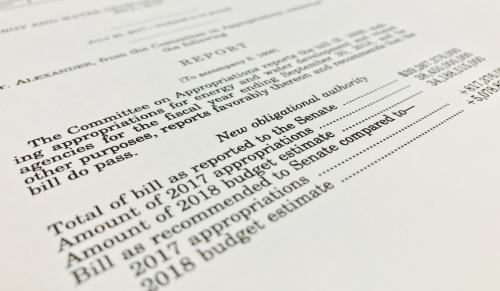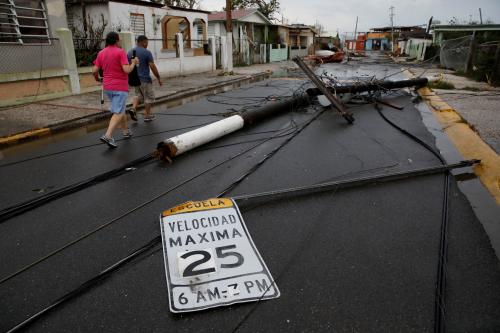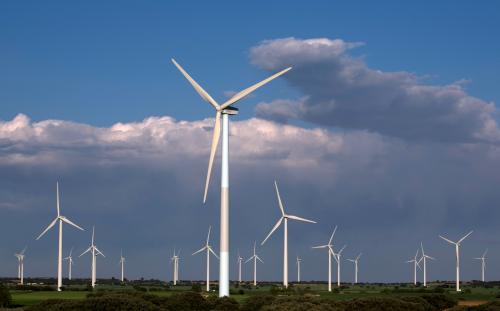It’s rare to have an opportunity to shape an energy technology market as it emerges.
Today, battery storage is that energy technology.
The world’s leading technology consultant McKinsey now says battery storage is the “next disruptive technology in the power sector.” According to its 2017 report, “low-cost storage could transform the power landscape.”
“At today’s lower prices, storage is starting to play a broader role in energy markets, moving from niche uses such as grid balancing to broader ones such as replacing conventional power generators for reliability, providing power-quality services, and supporting renewables integration.”
U.S. battery installations were up 27 percent in 2017, and that growth is expected to more than double in 2018.
Whether the title is deserved or not, battery storage has been called the “holy grail” of clean energy as it could solve the variable production problem faced by many renewable energy technologies, the same power shifting challenge Thomas Edison tried to solve when he invented the battery over a hundred years ago.
The technology might well transform all sectors of the economy, with the potential to enable the eventual decarbonization of our energy system.
But there are still numerous barriers inhibiting greater storage adoption, as was the case for the solar industry about 20 years ago. For storage, these barriers include an absence of coordinated state and federal policies and programs to reduce costs and encourage market uptake.
For the last five years, my organization—Clean Energy Group (CEG), a nonprofit—has been working to understand how battery storage will change future clean energy markets. Over this time, groups as diverse as state policymakers, cities, low-income community-based organizations, industry, environmental advocates, foundations, and investors have asked us questions about what is needed to ensure energy storage serves environmental, equity, and economic needs.
Now, my team is setting out our best answers to those questions in a new report out today entitled “Jump-Start: How Activists and Foundations Can Champion Battery Storage to Recharge the Clean Energy Transition.”
This first-of-its-kind report is designed for activists and foundations—and for the policymakers who should respond to them—who want to understand how battery storage can become a new part of their clean energy, environmental justice, and climate advocacy efforts.
The analysis tries to answer two basic questions: (1) What do leaders need to know to understand these opportunities, and (2) what actions should we take to realize them?
The report describes 10 key trends for battery storage in the energy system.
In response to these trends, the report proposes more than 50 actions to accelerate the uptake of battery storage as a major part of the clean energy transition.
These 10 areas are:
- Lower Electric Bills: Reducing Demand Charges. The commercial customer-sited economic case for behind-the-meter storage is working.
- Resilient Power: Providing Protection in Storms and Outages. In disasters and everyday life, resilient solar PV and battery storage (solar+storage) systems prove better options to protect against power outages.
- Equity and Justice: Bending the Arc of the Technology Curve toward Vulnerable Populations. Low-income people should benefit from resilient power now, not years from now through technology trickling down.
- Public Health: Creating Greater Protection for Medical Care and Hospitals. Health care facilities should start to explore use of solar + storage for cost reductions and power protection.
- Finance: From Mainstream to Low-Income Markets. A tale of two financial worlds demands more action to get new resilient power technologies to the poor.
- The Future of Solar: It’s Storage. With changing net metering policies, evolving utility rates, and the need for more flexible generation, storage is essential to the future success of solar.
- Emissions Reductions: Replacing Fossil-Fueled Peaker (and Maybe Baseload?) Plants. Battery storage could soon put many fossil-fueled peaker plants at economic risk now, a competitive disruption possibly facing existing or new fossil-fueled baseload plants over the longer term.
- Utility Markets: Emerging Role of Large-Scale Energy Storage Systems. In-front of-the-meter battery storage is a way to reduce grid-level capacity payments and secure other system benefits.
- Electric Vehicle Charging: Optimizing Price and Reducing Power Outages at Public Charging Stations. Utility demand charges and the risk of power outages demand use of onsite storage at public EV charging stations along major highways and transportation routes.
- International: Becoming a Global Market. The time is right for an international collaborative effort to scale up storage and overcome market obstacles.
The actions will accelerate the rate of storage adoption, which will, in turn, facilitate increased renewables deployment, reduce emissions by displacing fossil-fueled power plants, increase energy democracy through decentralization, and boost the efficiency and reliability of the grid.
And it bears noting here that the advance of storage is especially important for metropolitan and urban populations. Instead of the typical, delayed technology trickle-down, the report recommends that policymakers act to ensure that low-income, vulnerable people in urban areas have access to battery storage technology from the start. One way to do that is to use solar and battery storage to replace potentially scores of existing, infrequently run gas plants—called peakers—that are today polluting many urban neighborhoods, with disproportionate impacts of low-income communities.
Apart from reducing pollution in inner cities, battery storage projects can also reduce electric bills for affordable housing owners and low-income customers, while using the systems to keep the power on during storms and disasters looks very much like a new form of wealth creation and resilience for low-income neighborhoods.
At bottom, then, our new report is a hopeful document. Its premise is that we are on the cusp of a significant technological change in energy that we’ve not seen for over 100 years.
But there is also a warning here. It could be, after all, that leaders will be slow to embrace this technology opportunity with sufficient support.
Such indifference would lead to greater environmental emissions; more risk to critical facilities in cities and towns that lose power in disasters; a continued clean energy divide between the haves and the have nots; further reliance on natural gas to fuel the power system; a disproportionate emissions burden for low-income communities; and a failure to advance storage to achieve long-term climate stabilization goals.
In sum, the stakes are high: states, cities, and the nation have before them a great opportunity to reduce pollution and foster resilience. They should seize it.
Lew Milford, a Non-Resident Senior Fellow at the Metropolitan Policy Program, is president and founder of Clean Energy Group (CEG) and Clean Energy States Alliance (CESA).







Commentary
Recharging the clean energy transition with battery storage
Wednesday, April 18, 2018